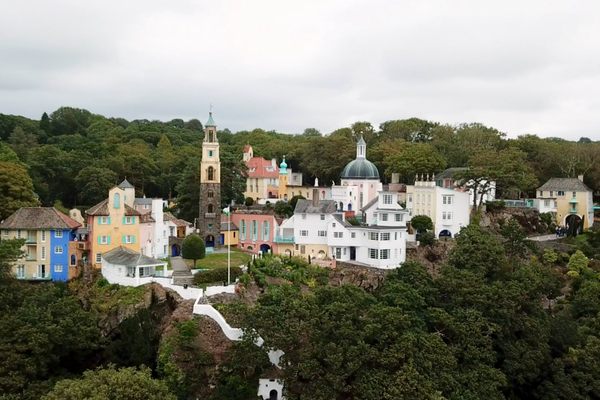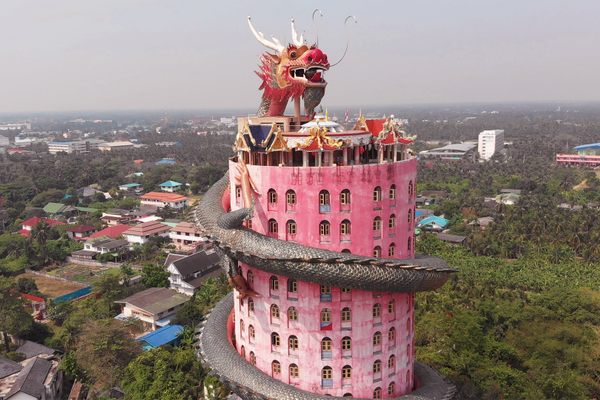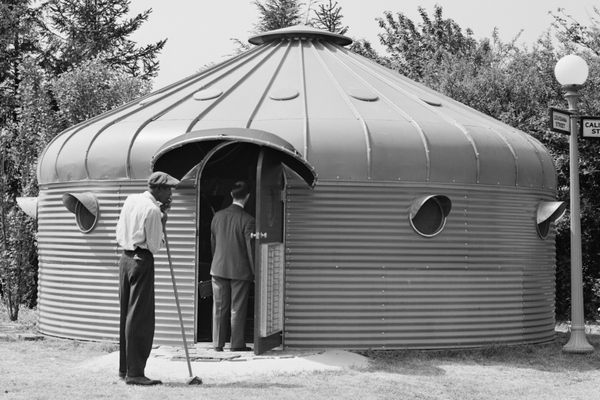Five Great, Underappreciated NYC Buildings
Manhattan and Brooklyn bridges over the East River, looking to Brooklyn (photograph by Allison Meier)
There are thousands of buildings in New York City in an architectural landscape that has evolved with the city’s history. Yet while stalwarts like Grand Central Terminal, the Empire State Building, and the Chrysler Building get avid attention for their architecture, there are numerous great buildings that are overlooked.
Architect Stephen Dargo, who is teaching a class this week at the Brooklyn Brainery on “Great New York City Buildings Few Guide Books Will Ever Mention,” told Atlas Obscura: ”NYC is full of amazing buildings, some of which get most of the attention. But I’m more interested in those buildings that create the New York City vernacular architecture: those buildings that you might walk past every day without realizing their architectural significance or the fact that they may have their own rich history.”
Dargo listed five of these great underappreciated buildings for Atlas Obscura:

COIGNET BUILDING
The Coignet Building (via Wikimedia)
Dargo says: “The Coignet building at 360 3rd Avenue at 3rd Street in Brooklyn is the one building we look at in the class that had most peaked my interest. It’s a late 19th century building that I had always taken note of, but that I never knew anything about. It sits seemingly in the middle of nowhere near the industrial Gowanus Canal. (The surrounding area is being developed into a Whole Foods, so all this will change fast.) It turns out to be the oldest concrete building in the city, and one in which the purpose of the building itself was architectural: the owners manufactured an early type of concrete, and the building is a showcase of the various type of concrete building materials that they made. So it turns out that this little decrepit building that seems completely out of place is in fact a very significant building in the history of NYC architecture.”
EAGLE WAREHOUSE
Entrance to the Eagle Warehouse (photograph by Jason Kuffer)
The Eagle Warehouse in Brooklyn is a monolith of Romanesque Revival architecture in the Fulton Ferry District in DUMBO. Completed in 1894 with a design by Frank Freeman, it was actually built up over an existing three-story pressroom for the Brooklyn Eagle newspaper. While the building at 28 Old Fulton Street has since gone from warehouse to apartments, it still has its fortress-like grand arch in its brick façade still embedded with the Eagle Warehouse name in giant letters.
Eagle Warehouse (via Wikimedia)
STARRETT-LEHIGH BUILDING
Starrett-Lehigh Building (photograph by Jessica Spengler/Flickr user)
Most of Chelsea in Manhattan is low warehouse buildings, but the Starrett-Lehigh Building is a 19-story tiered palace in comparison, taking up a whole block from West 26th to West 27th Street between 10th and 11th Avenue. Designed by Russell G. Cory, Walter M. Cory, and Yasuo Matsui and built in 1931, it incorporates the forward-thinking, modernist International Style with a traditional warehouse, where a whole rail yard was built into the ground floor. Now the red brick building with its steel sashes of windows mostly has media and fashion in its huge office spaces, and food trucks drive up its massive indoor ramps to offer lunch to the thousands who work there.
The Starrett-Lehigh building viewed from the Empire State Building in 1934 (via rollingrck/Flickr user)
BOWERY SAVINGS BANK
Bowery Savings Bank (photograph by edenpictures/Flickr user)
The Bowery Savings Bank was like nothing else on Manhattan’s the Bowery when it was opened in 1895, and that’s still the case for the stately Roman Classical style building between Broome and Grand streets. It was designed by Stanford White of McKim, Mead, and White with towering corinthian columns at the front and an interior modeled after a Roman temple, with marble everywhere and mosaic floors. It inspired banks across the country to take on a Roman aesthetic, although the building itself is now a restaurant and event space. As for White, after arguably becoming the most significant architect of his era, he was shot at point blank range on the roof of his own Madison Square Garden by a deranged husband of one of the chorus girls he’d lured to his infamous apartment with its velvet swing.
Bowery Savings Bank viewed from the (since demolished) elevated line on Bowery in 1900 (via Library of Congress)
STOREFRONT FOR ART AND ARCHITECTURE
Storefront for Art and Architecture (photograph by Kristen Taylor/Flickr user)
The wedge-shaped Storefront for Art and Architecture is a relatively small space with 961 square feet for its exhibitions, talks, and screenings, but during the 1993 revamp of the building at 97 Kenmare in Manhattan, architect Steven Holl collaborated with artist Vito Acconci to turn its façade into a window to the street. Twelve panels that open both vertically and horizontally open to the sidewalk, an appropriate feature for a space so often at the center of discussions on interacting with urban space.
Storefront for Art and Architecture with its doors closed (photograph by Lauren Manning/Flickr user)
These are just a few of the many underappreciated, yet architecturally fascinating, buildings in New York City that are worth exploring. As Dargo told us:
“New York City is an architecturally interesting place for obvious reasons. Some might say that it’s the world capital of the built environment. However, it’s so densely packed with buildings that it’s almost impossible to document every single one. The buildings I talk about in my class are definitely documented, but they are lesser known than your Chrysler buildings, Empire State buildings, etc. The point of the class is to make people aware of the fact that great architecture is all around them in the city.”
Stephen Dargo is teaching “Great New York City Buildings Few Guide Books Will Ever Mention” this Thursday, July 11, at the Brooklyn Brainery.

















Follow us on Twitter to get the latest on the world's hidden wonders.
Like us on Facebook to get the latest on the world's hidden wonders.
Follow us on Twitter Like us on Facebook